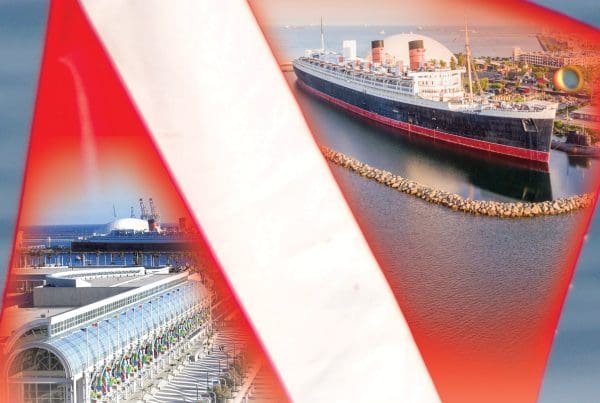Just offshore from Cancun, Mexico, a new protected biosphere named Reserva de la Biosfera Tiburón Ballena (Whale Shark Biosphere Reserve) has been named. It is located in front of the north coast region of Quintana Roo and covers a surface area of 145,988 acres. The marine surface of this Protected Area guarantees the protection of the region that contains waters rich with organic material. This concentration of nutrients allow for the exceptional presence of species such as mussels, crustaceans, birds and marine mammals, and above all schools of fish, as well as large groups of whale sharks, making it the perfect environment for spotting these gentle sea giants in their own environment.
Every year, from May to September, divers can get up close and personal with the biggest fish of the world, by visiting Cancun. It is during these months that the gentle giants of the ocean prefer the nutrient-filled waters of the northern areas of Holbox, Isla Contoy and Cabo Catoche where they feed and mate. The whale shark is unique in that its mouth is located in front of its head, unlike other shark species. This positioning allows the whale shark to feed, normally just below the surface, by simply opening its mouth and scooping up plankton, literally vacuuming food from the water.
Locally known as Dominos, whale sharks are dark brown or grey with white or yellow spots, and a white or yellow underbelly. Their size is quite impressive measuring between 15 to 50 feet (5 -16 m) in length and weighing as much as 10 tons, make swimming alongside these species a thrilling experience. Considered the largest fish in the world, these animals are completely harmless and peaceful. Those who wish to experience swimming with the whale sharks are provided with guidance from industry experts.
Protecting the whale shark has been a priority for government agencies throughout the last few years, making certain the magnificent animals are not harmed and ensuring that they continue to migrate to the area. Local guides have been provided with additional training in developing and executing tours that are safe for the whale sharks and tourists alike. In addition, strict rules have been implemented against scuba equipment being used to view the species.
Cancun and Puerto Morelos is home to the second-largest barrier reef in the world, making a hands-on encounter with the marine world more attainable. Whale sharks, dolphins, manatees, manta rays, stingrays and sea turtles are just a few of the marine species you can spot underwater accompanied by marine staff and experts, such as Biologist Rafael de la Parra, Director of the Project Domino Research sponsored by the Mexican Government, or Dr. Roberto Sanchez from Dolphin Discovery in Cancun.
Cancun is located in the northern part of the southeastern Mexican state of Quintana Roo. The island of Cancun is in the shape of a “7” and is bordered to the north by the Bahia de Mujeres, to the east by the Caribbean Sea, and to the west by the Nichupte Lagoon.
Cancun is Mexico’s largest tourist destination and boasts 146 hotels with a total of 28,808 rooms For more information, visit the website of the Cancun Convention and Visitors Bureau at http://cancun.travel/en/










